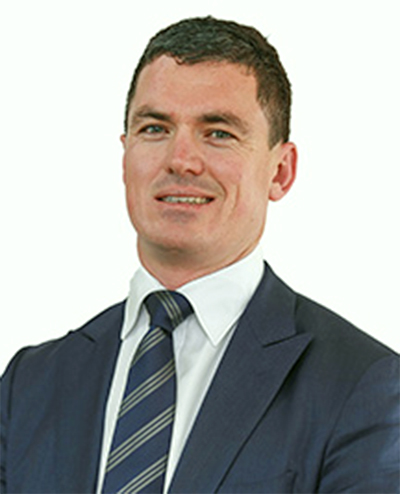PHARMACIES throughout Australia are missing out on developing better customer and community relationships – and losing vital revenue at the same time.
That is the concern of pharmacy business solutions educator Martin Millane, who has been urging pharmacists, who are more likely to be focused on the compounding aspects of the business, to re-work and re-energise retailing and marketing systems for better results all round. 
Apart from the business sense of it, Ravens Pharmacy Sales leader Mr Millane believes pharmacies should be a key catalyst in the much-needed transformation of health services in Australia, as governments struggle with increasing costs and medical practitioners manage soaring demand for their services.
“Chemists are scientists. In the dispensary side of things they are very good at knowledge of the pharmaceuticals and compounding,” Mr Millane said. “However, when it comes to running as a business and respecting what the front of the shop should be doing for their business overall, often they need assistance.”
Mr Millane helps chemists around Australia re-organise and re-prioritise their retailing, marketing and ‘front-of-shop’ for better business results. He also advocates they extend their health advisory role by providing information and knowledge to the community – and that they collaborate with other health professionals in their communities.
Mr Millane has seen pharmacies become an integral part of boosting health in their local areas, by working with doctors, dentists, physiotherapists and becoming a rallying point for local activity. The retail elements of those businesses have been boosted through understanding what the local community wants and needs and providing it at the right price.
Mr Millane often uses case studies of successful approaches by innovative pharmacies to encourage pharmacy businesses to develop their own localised approaches. One example is a Melbourne pharmacy that identified weight loss product demand and developed a walking group which helped to start a chain of positive local community health outcomes.
“If you are going to be a leader in weight loss, you have to drive that category and be a leader in your area,” Mr Millane said. “An example is an Amcal pharmacy in Melbourne which organised a walk group.
“Every Monday morning he had about two dozen people who would come to his pharmacy wearing his tee-shirts. There would be a card table there with pure orange juice etcetera on it and then, with one of his staff, the group would go on a 2km walk. When they came back there would be orange juice and other things there for them, right next to the weight loss section. He also had exercise bikes there he’d hire out.
“He was driving the category. It’s how you create local demand for that category is what the challenge is.
“That’s why there is more science going in to how to drive your front-of-shop categories, because it is not just a matter of having something on a shelf. It’s how much you can drive it.”
Mr Millane said a pharmacy business had to be organised to develop new areas – and that often required staff training to allow for delegation.
“If he or she doesn’t have the time because of their role in the dispensary, then having the right staff is vital,” Mr Millane said. “You need a staff member who is responsible for driving this category through the right kind of local activity. It’s about ‘us’ as a destination.”
Mr Millane said successful modern pharmacies increasingly identified local health needs and interests and focused on becoming a destination that helps to meet those needs. In the future, he believed pharmacies would become lifestyle hubs for communities.
SPORTS MEDICINE
A good example of how pharmacies fit in to communities is the sports medicine category, Mr Millane said.
“Sports medicine is a category that is very under-utilised. If you are going to drive sports medicine as a category I recommend it be done by having two staff in every pharmacy that are qualified as a level 0 or level 1 sports trainer.”
It is a strategy Mr Millane employed in a past role with the National Pharmacies group.
“We’d go to the local sports clubs who did not have trainers allocated to them, or the money to afford trainers,” Mr Millane said. “We would then promote to those clubs that, at the pharmacy, there were people qualified as sports trainers.
“If they needed to have their ankle taped or their fingers taped, they could come in and do so. If they were injured, then they knew they could go to the pharmacy and get the correct gear – whether it be a cold compress, analgesics or whatever – and the correct advice on when to apply or treat the injuries.”
Mr Millane said pharmacies that focused on sports medicine in this way built great long-term relationships with sporting clubs and their communities.
Another aspect of sports medicine Mr Millane believes should be fostered is the relationship with local physiotherapists.
“I have heard that some physiotherapists do not have the highest opinion of pharmacies because they see a shotgun approach to their product mix,” Mr Millane said. Discussions with physiotherapists and taking advice on what to stock would optimise shelf space and add value.
“For a pharmacy or a (chemist) group to be recognised for sports medicine and to be driving it, they (would) do some cross marketing. Say, if there was a gap or space in the physiotherapist’s diary, they could set up in-store and offer customers some basic first aid advice. Then that’s a win-win.
“The customer gets good advice and the physio lifts his profile and the pharmacist gains by providing a value-added service to his customers. The physio might refer a patient to the pharmacy because he knows they have the correct items, for instance, like compression garments.
“That’s where the cross marketing develops with other allied health professionals to drive categories,” Mr Millane said. “With that comes loyalty. With loyalty, you do not have to worry about selling things like extra confectionery bars.
“It’s not about impulse buying. It is about developing categories where there is loyalty.”
RETAIL SENSE
Mr Millane has found pharmacies lacking in strategy and good retailing sense – even among some of the bigger groups – often because there was a lack of focus on the front-of-shop experience. While this was understandable for busy pharmacists, many also hung on to old ‘impulse buy’ beliefs and had not adapted to modern retailing trends.
“For example, if a pharmacy is positioning to be very health orientated, but you still see, when you walk into the stores, in prime-key positions, things like confectionery,” Mr Millane said.
“And they hang on to their old theory about impulse buying and adding more dollars to the cart. However, that doesn’t work.
“Some of the ideas behind it, even stocking things like Kleenex tissues, and I’ve mentioned the confectionery, are these high consumable brands or products where 99 percent of the market share belongs in the supermarkets. But the theory is that ‘if we stock some of these high consumable items, while the person is there buying the Kleenex or buying the chocolates or whatever, they will drop in their script or they will buy a Visine’.
“But it is the other way around,” he warned.
“The amount of money invested in space and in hanging on to stock of these low profit items – and the space it takes up – when you compare that to what they could be selling or investing in – makes it chalk and cheese on what they could be actually delivering (to the customer).”
Mr Millane constantly urges pharmacists to focus on core business.
“Put in something in the health orientation,” he said. “Look for some new segments which may be innovative – for example, organics is a growing segment in the food area.
“Some of the new remedies, like aromatherapy. Those type of segments which are under-represented in pharmacy.
“It would be very easy to remove things that might cost you 70 cents and you sell them for $1 – and replace them with something far more profitable. You need to make your percentages.”
Mr Millane lamented that, at present, the level of investment by pharmacists in fitness and health is minimal.
“Moreso, the investment has been in things like your weight loss brands and products,” he said.
“The problem with weight loss is that it is such a fickle segment of the market.”
He gave the example of a grapefruit slimming tablet that his pharmacies once stocked that seemed to do well in some years but performed poorly in others – because the weight loss sector is notoriously trend-driven.
“We deleted that brand from out list of products, because we never knew one year to the other whether it was going to be a big year in weight loss or a poor year,” he said, warning that there were many other products in the sector that were not in stable demand, affected by trends, fads and advertising.
Mr Millane’s business is focused on educating pharmacists in how to develop their businesses sustainably, encouraging them to think about the future of their industry and how to adapt to new community needs and demands.
“A pharmacy industry magazine’s research, in February this year, showed only 28 percent of pharmacists had a legitimate interest in their front-of-shop, because they are basically scientists and pharmaceutical people,” Mr Millane said.
“When you have less than a third of pharmacists interested in their front-of-shop, it shows how under-utilised and under-performing that area probably is. That’s where we come in.”
www.ravens.com.au/martin-millane.html
ends


 How to resolve AdBlock issue?
How to resolve AdBlock issue? 







